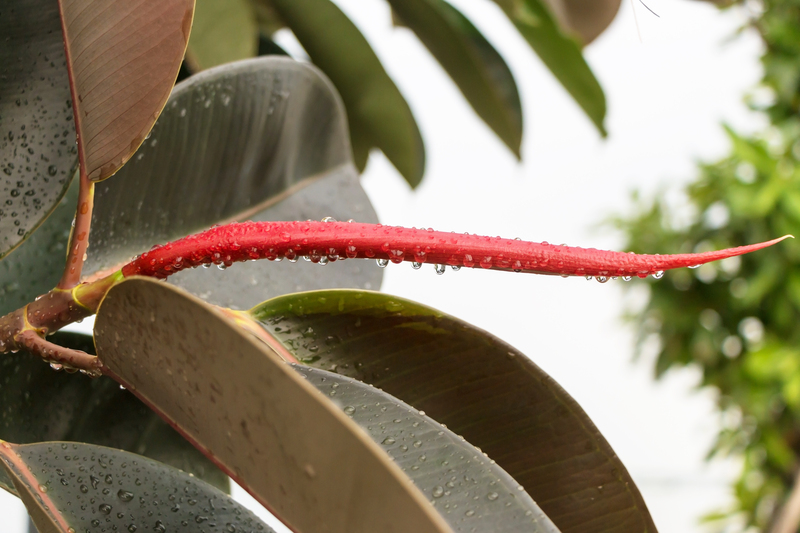Maximizing Plant Protection Against Windy Conditions
Posted on 11/09/2025
Maximizing Plant Protection Against Windy Conditions
Whether you're an avid gardener or a professional grower, windy conditions pose a significant challenge to the health and yield potential of your plants. Intense gusts can damage foliage, uproot young plants, reduce fruit quality, and even diminish the structural integrity of more mature specimens. Utilizing plant protection techniques that address wind stress is vital for maintaining a healthy, thriving garden or landscape. In this comprehensive guide, discover tested strategies for maximizing plant protection against windy conditions and securing your green investments.

Understanding the Effects of Wind on Plants
Before diving into preventive measures, it's essential to understand how wind affects plants. Wind-induced stress can manifest in several ways, including:
- Physical breakage: Branches and stems may snap or bend under persistent gusts.
- Soil erosion: High winds can remove topsoil, reducing available nutrients and further destabilizing plants.
- Desiccation: Wind accelerates moisture loss through leaves - a process called transpiration.
- Pollination issues: Excessive wind disrupts pollen transfer, affecting fruit and seed production.
- Reduced growth: Continuous movement causes plants to allocate energy toward structural reinforcement, limiting growth.
By recognizing these impacts, you can tailor your approach to plant protection in a windy environment more effectively.
Essential Strategies for Plant Protection Against Wind
1. Choose Wind-Resistant Plants
The path to maximizing plant protection from wind starts with smart selection. Some plant species are naturally more suited to withstand breezy conditions. When designing your landscape or choosing additions to your garden, consider plants with:
- Flexible stems that bend rather than break
- Low-profile growth or ground-hugging habits
- Small or narrow leaves to reduce wind resistance
- Deep, stable root systems that anchor plants securely
Examples of wind-tolerant species include junipers, lavender, rosemary, ornamental grasses, and many native shrubs and trees. Consult local nurseries or cooperative extensions for recommendations suited to your region.
2. Strategic Plant Placement and Shelterbelts
Plant protection in windy climates is greatly improved through strategic layout. Leverage the natural topography by planting sensitive specimens in sheltered positions, such as:
- South-facing walls (in the Northern Hemisphere)
- Natural depressions or hollows
- Behind existing trees, shrubs, or hedges
- Windward side of fences or structures
Establish shelterbelts--rows of thick, wind-tolerant plants or trees--which act as living windbreaks. Well-designed shelterbelts can reduce wind velocity by up to 50% for a distance equal to 10 times their height, dramatically increasing protection for crops or garden beds.
3. Erecting Artificial Windbreaks
Where natural wind barriers aren't available, artificial windbreaks are invaluable for maximizing plant protection in windy conditions. Consider these options:
- Fences: Solid or slatted wooden fences provide immediate relief, though semi-permeable designs (like louvered or mesh panels) are often more effective, as they diffuse rather than fully block the wind, minimizing turbulence.
- Garden netting: Flexible, easy-to-install windbreak netting can be secured around vegetable beds or seedlings.
- Burlap screens: Eco-friendly and breathable, burlap can be stretched between stakes to shield rows of plants temporarily.
- Temporary barriers: Make use of available resources, such as straw bales or even overturned garden carts, during peak wind periods.
Always install windbreaks at a 45-degree angle to the prevailing wind direction for optimal performance. Regularly inspect and maintain these structures to ensure continued effectiveness.
4. Staking and Supporting Individual Plants
Staking is a simple yet essential technique for plant protection in windy areas, especially for young trees, tall annuals, or plants with top-heavy growth. Here's how to do it right:
- Use soft, flexible ties to prevent stem abrasion
- Anchor stakes firmly into the ground, ideally one-third the plant's height
- Allow slight movement to encourage strong, resilient root development
- Monitor ties regularly and loosen them as the plant grows
For added stability, consider guy lines or multi-stake arrangements for larger trees or shrubs.
5. Mulching to Prevent Soil Erosion and Moisture Loss
Wind not only buffets plants but also strips away valuable topsoil and moisture. Applying a generous layer of mulch--such as straw, wood chips, leaves, or compost--offers several benefits:
- Stabilizes the soil surface, discouraging erosion
- Reduces rapid evaporation caused by wind
- Regulates soil temperature, buffering roots against sudden chills
- Promotes healthy microbial activity for nutrient uptake
Ensure mulch is applied 2-4 inches deep and kept away from direct contact with plant stems, which discourages rot and pests.
6. Pruning Techniques to Reduce Wind Load
Selective pruning is a highly effective means of maximizing plant protection from wind. The goal is to:
- Remove dense, overcrowded growth that catches wind and increases drag
- Thin out inner branches to allow air circulation without creating "wind tunnels"
- Shape tree and shrub canopies for better balance and wind dispersal
Prune before the windy season begins. Never remove more than one-third of a plant at a time, as this can weaken it further.
7. Creating Wind-Tolerant Container Gardens
If your gardening is focused on containers, balconies, or rooftops--often the most wind-exposed settings--take the following precautions:
- Opt for heavy, broad-based pots to prevent tipping
- Cluster containers to create mini-windbreaks for each other
- Choose dwarf or compact plant varieties
- Secure trellises and supports directly into containers
- Water frequently, as wind dries out potting soil quickly
Seasonal Considerations for Windy Weather Plant Protection
Spring and Early Summer
Many regions experience strong, drying winds during spring. At this time:
- Install windbreaks or reinforce shelterbelts before planting
- Cloches or row covers help shield seedlings overnight
- Monitor young transplants often for signs of stress or wilting
Autumn and Winter
Fall and winter storms can bring high winds, ice, and snow. Protect plants by:
- Pruning away damaged or weak branches in advance
- Wrapping evergreens and vulnerable shrubs in burlap
- Securing trellises, stakes, and outdoor containers
Best Practices for Long-Term Wind Management
- Monitor prevailing winds: Identify seasonal wind patterns for informed garden planning
- Soil health: Maintain rich, well-structured soil to encourage strong root growth
- Routine plant checks: Assess for damage after storms and respond promptly
- Flexible adaptation: Be ready to modify your planting plan, windbreaks, or supports as conditions change
Addressing Special Cases: High-Value & Delicate Plants
Some crops and ornamental plants are particularly sensitive to wind stress. For fruits, flowers, and specialty herbs, increase protection by:
- Placing temporary tunnels or hoop houses over beds before storms hit
- Using anti-transpirant sprays to slow water loss on leaves
- Double staking or using cages for tall, top-heavy plants (like tomatoes or delphiniums)
Common Mistakes to Avoid
- Overstaking: Immobilizing a plant too tightly can cause weak root systems and snap-prone trunks
- Ignoring maintenance: Broken windbreaks or neglected mulch lose effectiveness quickly
- Poor site selection: Failing to factor in wind exposure can doom sensitive plants from the outset
- Neglecting aftercare: Even wind-tolerant species may struggle without adequate water and nutrients after wind events

Innovative Solutions for Windy Gardens
Innovative gardeners and landscapers are constantly developing new ways to safeguard their plants from wind stress. Recent trends include:
- Living walls: Vertical plantings double as wind shields and habitat boosters
- Customizable modular wind barriers: Adjustable panels that move with shifting wind directions
- Smart weather sensors: Automated systems that trigger protective structures based on wind speed forecasts
Conclusion: Achieving Optimal Plant Protection in Windy Conditions
Maximizing plant protection against windy conditions requires a combination of thoughtful planning, ongoing observation, and adaptive management. By selecting resilient species, using both natural and artificial windbreaks, employing best practices for staking and mulching, and paying close attention to seasonal wind trends, every gardener can create a landscape that not only survives--but thrives--in the face of blustery weather.
With these practical, proven tips, you'll be more than ready to defend your favorite plants against the next windstorm. Don't let wind dictate the fate of your garden--take action today and enjoy healthier, more robust plants for years to come.
- Related Keywords: wind protection for plants, shelter for plants in wind, wind-resistant plants, garden windbreaks, plant wind barriers, windy garden solutions

